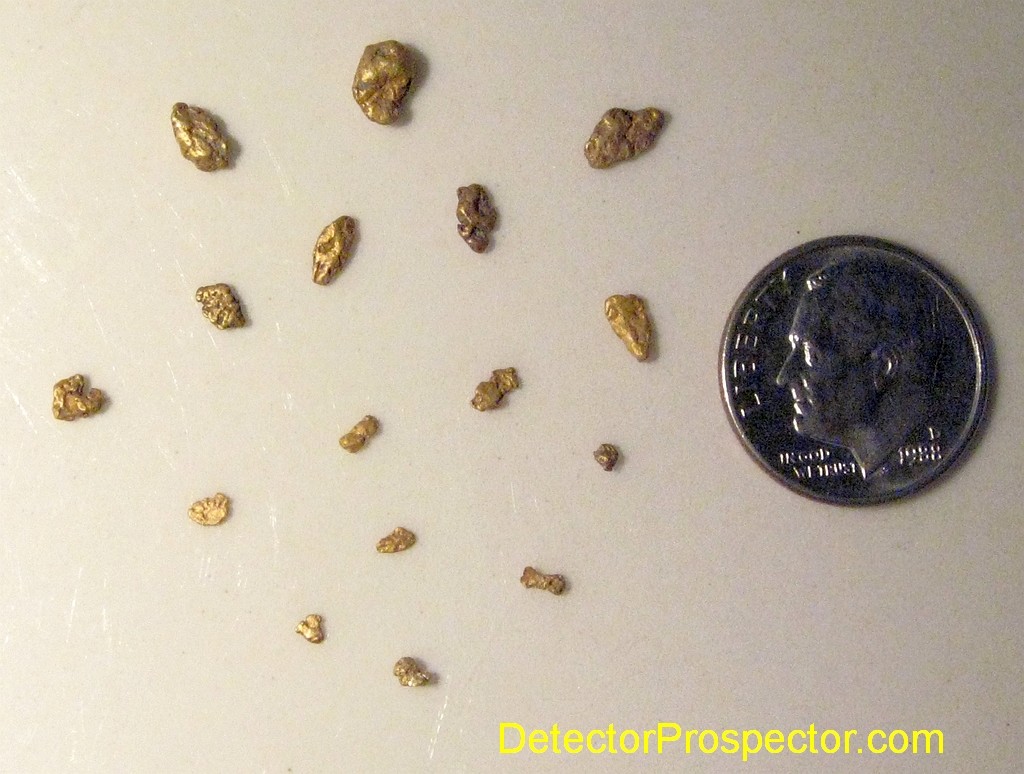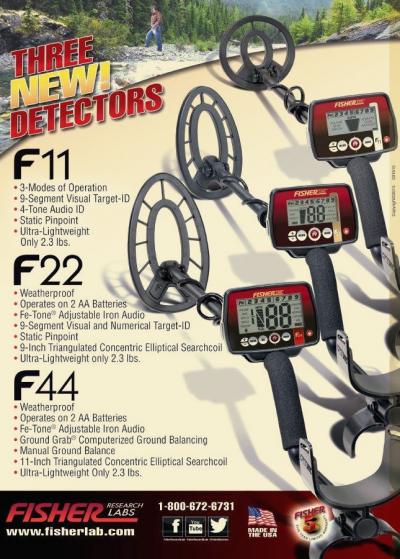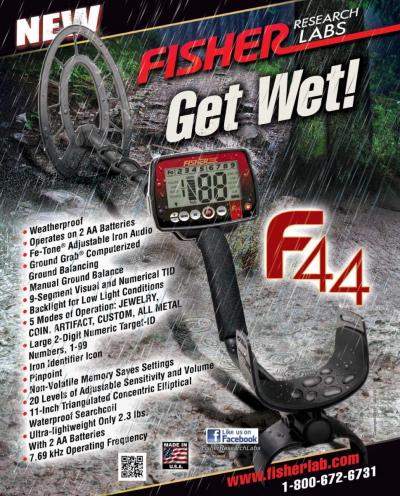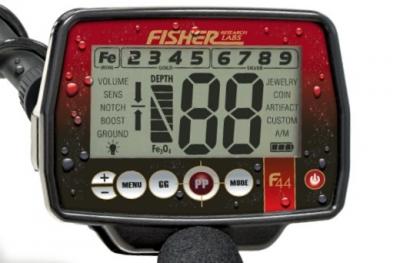-
Posts
19,755 -
Joined
Content Type
Forums
Detector Prospector Home
Detector Database
Downloads
Posts posted by Steve Herschbach
-
-
-
-
-
If you are having problems with Bill's forum (Nuggetshooters) then Bill Southern is who you are looking for. Jims "forum" is just a dedicated thread hosted by Bill.
-
From https://support.google.com/earth/answer/176160
"Use of Google Earth Pro requires a valid license key. As of January 20, 2015, Earth Pro licenses are now free. After getting your Earth Pro license, you can register, download, install, and sign in to start using Earth Pro's advanced features.
If you do not have a key, use your email address and the key GEPFREE to sign in.
Existing license keys have already been extended, so if you already have a license then you can keep using Earth Pro without ever needing to renew again."
-
Hi Ivan,
Loyalty to inanimate objects?

I have owned a Gold Bug 2 since the day they came out - I had the first one in Alaska. Used them ever since, and it found me a lot of gold. It was perfect for my stomping grounds in Southcentral Alaska where nuggets are measured in Grains not Grams. These nuggets from my story at http://www.detectorprospector.com/steves-mining-journal/metal-detecting-micro-gold-nuggets-crow-creek.htm were typical...

Sixteen nuggets for 17.4 grains total found with Gold Bug 2
However, since moving south I have focused much more on pulse induction detecting. Getting to good gold was very hard in Alaska and places good for a PI are not common. Down here there are nearly unlimited opportunities in every direction from Reno. Most are amenable to pulse induction. A lot of it also has to do with the GPZ 7000 coming out. When I get time to detect, I want to go where I have at least a chance at a nugget over a gram, and I want to run a PI, especially the GPZ.
That is what I have been doing in general. The really trashy areas I prefer a mid frequency unit with more discrimination options than the on/off iron disc the GB2 offers. The FORS CoRe is more useful to me than the Gold Bug 2 in that regard.
Long story short? I have not actually used my Gold Bug 2 for two years now. In fact, the last serious use was a trip to Alaska three years ago.
I just have too many detectors. I am not a person fond of owning things. I would live out of a suitcase if I could but the wife is not going for that. When I see stuff piling up it literally weighs on me so I have a serious urge to clean house right now. That, and other detector options on the horizon continue to make it unlikely that my Gold Bug 2 is going to see much use in the future either. Time for it to make room for something else.
-
-
Dave Johnson designed the MXT. Dave did the F75 much later with more technology at his disposal. The performance is similar but the F75 has more tuning/setup options.
But that is not it. Truth be told in my opinion all the 13 - 19 kHz machines are "good enough" for me. I can do well with any of them.
This may sound crazy but it is mostly about what feels good on my arm and sounds good to my ear. The F75 feels better on my arm, weight and balance, than any detector I have ever used. Just like putting on a good leather glove. Fit and feel is great - for me. Not to say my gloves would fit you well - it is a personal preference thing.
And I like the range of audio options. The machine can be set up many ways and sounds very good to my ear.
The 13 - 19 kHz performance debate is just a hair splitting exercise in forum filling debate and opinions, with the worldwide variation in ground types and targets making definitive answers impossible.
When faced with decisions like this I just get a detector like I am buying a pair of boots. They all work. I need a pair that fits well and wears well.
Like everything else the F75 is not perfect however. It has an unfortunate tendency to leaning ferrous instead of non-ferrous at the balance. The tipping point is a big deal. Go too far one way, people dig too much ferrous called as non-ferrous, and hate the machine. The F75 is designed to minimize false positives. But that means the unwary can get caught passing good targets. All metal mode though is superb.
Like all similar designs the F75 is not balanced well at all with a big coil. I have the FORS CoRe specifically for that purpose.
And final caveat always - what works well in my ground on my targets is another thing entirely in, for instance, Australia. Ultimately getting anything just because it works well for somebody else somewhere else is a crapshoot. You have to just get them and see what works for you.
True story is I hated the F75 when I first got it. http://www.fisherlab.com/hobby/finds-Steve-Herschbach.htm EMI made me sell my last one finally but the new F75Ltd2 fixed that problem so now I am pretty happy.
-
I graduated from a high school in Alaska so I am staying out of this one! I do know a GPZ runs dead in a day and charges fully before morning.
-
Had one to try, liked it, sold it in favor of F75 since I have a FORS already and it and F19 are so close.
The F19 is really the one to have I think but I like the extra options with the F75 and the sheer feel of the machine. Still sorting it out but by the end of the year I intend to have only one single frequency detector running from 13 - 19 kHz.
-
I have gone back and forth for hours with my F65Ltd2 and FORS on found targets and they are neck and neck. The Fors is less likely to misidentify borderline marginal non-ferrous targets as ferrous but the F75 offers multiple modes the Fors lacks. Bottom line is I can't seem to let either go yet. I would love to say one clearly trumps the other for outright performance but I can't. My high mineral ground tends to level things out a lot. Take almost any quoted depths I see on the Dankowski forum and I figure about half those in my ground.
Kind of like comparing F19 to F75 - hard to get a clear winner, just all depends on the ground and targets. I think the Fors and F19 are the better bang for the buck but I just really like my F75.
-
Thanks Steve and all the members for compliments. Really its about tons of research, good places to go, a good detector and a good partner.
You got that right. I know in Australia they are on pounded ground and so extreme depth is everything. Here, honestly, the majority of the gold I find I would probably find if I were swinging a FORS or a GPX or a GPZ. There are still 2 gram nuggets sitting out there an inch deep and first coil over it snags it. In that regard a GPX is just as good as a GPZ for a whole lot of gold.
Other gold I get I figure the machine really did make the difference. But I agree more with you on what really counts for success.
-
Could be the nature of the beast. I have posted that in my opinion the GPZ shares more in common with other continuous wave detectors than PI detectors and is in practice a Super VLF http://www.detectorprospector.com/forum/topic/970-minelab-gpz-7000-a-super-vlf-saturable-soil-tips/Wow, he is certainly not a happy customer. Remarkable, if his criticism is true, why didn`t ML tweak to this early in the piece before release?
The high frequency VLF detectors like the Gold Bug 2 are hot on small gold but impossible to use in salt ground. Just the way it is, a pure result of what it is designed to do. To be as hot as they are they will pick up wet salt soils and even the salty blood flowing in your hand. The GPZ combines the ability to hit tiny gold with extreme power, making the problem worse.
Making a Gold Bug 2 not detect salt would be like designing the sharpest razor blade in the world and then trying to figure out how to make it not cut skin. I suspect a similar issue may exist with the GPZ and that it may simply not be the best tool for wet salt ground. I don't think that negates all the good results people are having with the GPZ but it is certainly something to be aware of at this time until more information comes to light.
-
The 71 kHz Gold Bug 2 is the best there is for tiny gold in my opinion, though the various White's Goldmaster models and the GMT come extremely close.
The FORS are more comparable to the 19 kHz Gold Bug Pro which trades slightly less hot on small stuff for much better depth on larger gold. The Gold Bug 2 does not penetrate well for depth on larger gold in mineralized ground.
-
Welcome to the forum californiagold. I think you are the number one gold getter in the U.S. with the FORS Gold, so it is nice to have you posting here.
-
Screenshot of original Gonehunting settings at Link deleted since Findmall Forum update broke all old links
Downloadable zips at http://www.dankowskidetectors.com/discussions/read.php?2,56856,56861
-
Welcome to the forum Road Dog!
I enjoyed bilbos rant. Reminded me of me when I get wound up, which luckily is not often! Nothing works perfectly for everyone everywhere unfortunately. The day that happens I will need only one detector and right now I am struggling hard to cut it down to six.
-
I would say that based on experiences so far that if the GPZ 7000 has an Achilles Heel it is salt ground. Minimal salt levels would be indicated by ground that simply refuses to ground balance out that last couple inches near the ground. The more salt, the higher off the ground you will get signals that will not balance out. Minimal salt your can just lift the coil a bit. But if you are getting signals over a foot above the ground, or at waist height, there appears to be nothing you can really do that does more than slightly help. The problem does not go away through tuning.
As has been mentioned before it really takes both salt and water to create the problem normally. A cup full of dry salt can't be detected. Add water and mix, and now a hot detector will pickup the salt water. Hot VLF detectors sound off on your hand because of this. So ground that was not bad one trip can be very bad the next if some rain has occurred in between.
Here is a not happy customer in Oz very frustrated with the issue http://www.finders.com.au/forum/viewtopic.php?p=101734#101734
The early Minelab PI detectors also suffered in salt, but special "salt" coils and then later special settings helped tackle the issue.
Salt conductivity mimics gold conductivity. The only way you can get rid of salt signals is to eliminate the overlapping gold signals. Still, if a machine is non-functional due to noise, doing this and still getting the other gold that falls outside the salt range it a preferable option.
Right now if a person was going to really be getting into a lot of salt situations, another machine may be the way to go. The GPX series obviously handle salt areas well. I kept my ATX specifically for dealing with any salt situations I ever encounter that might foil my GPZ though I have not had to go there yet. There are other possible options, even the CTX 3030, that can be considered.
My take is pretty simple. The GPZ is crazy powerful, and in the current form salt ground may therefore be an issue. I have never yet found one detector that is perfect at everything and so no big shock to me. It may be some future GPZ version sports a special salt mode and that would be great. But if it does, it will then be no better than any other detector that ignores salt ground. I plan on more tests regarding this in the future and will report my findings at a later date.
-
The Compadre normally comes hard wired with an 8" or 5.75" coil and at 12kHz is moderately hot on gold. Not bad but not great either. Good detector though, best little single knobber on the market.
-
Hi John,
Thanks but no. I am not looking to make something. I am opening the discussion so my friends at First Texas, Garrett, Makro/Nokta, Minelab, Tesoro, and White's can all mine it for ideas. I do not want to make it or sell it- I want them to make it and let their dealers sell it.
-
Call me cheap (I prefer frugal) but I just don't want to pay $50 for camo. Same price I would bitch less.
-
What a great idea - kudos to all involved!
-
Steve, do you experience any falsing from having the coil so close to the metal box or cable pigtail?
Kind of surprising but no. If the coil was moving much relative to all that metal it would signal but as it is it works just as if it were on a longer rod.
-
Fisher used to make a 3" round coil for the original GB, it would work great. I think I still have the coil but not the detector.
Me too!





Bogene's Settings
in Minelab Metal Detectors
Posted
Key statements in the following video. High Yield is best on one ounce and smaller nuggets. General is better on nuggets weighing several ounces or more. Quite a gray area in the middle! Bottom line is I hunt in High Yield and I will let the multi ounce nuggets take care of themselves. I am pretty confidant I will hit them anyway. But if I was targeting a more mineralized area specifically looking for deeper, larger nuggets, I would run in general.